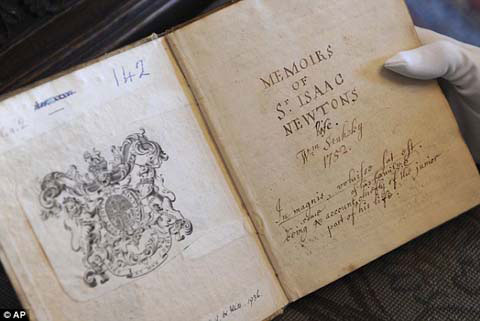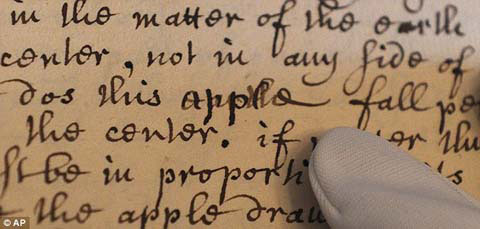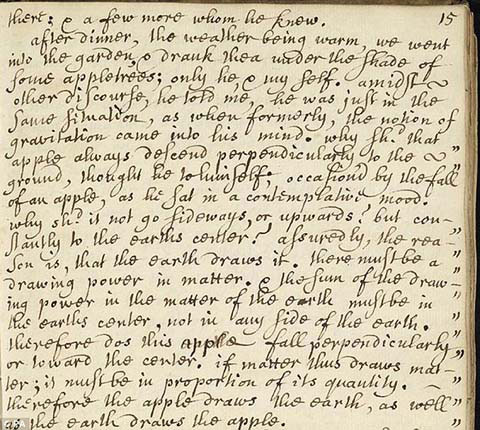Announced evidence of an apple falling on Newton's head
A thin handwritten manuscript reveals evidence of the story of an apple falling on the head of Isaac Newton recently announced by the leading scientific organization of the United Kingdom, Royal Society.
Since Newton published the law of universal gravitation, scientists still circulate the story of the apple falling on the head, arousing curiosity about the relationship between the mass and distance of the object in the great physicist. this great. However, many opinions suggest that it is a story of weaving.
However, with handwritten manuscripts dating back to 1752, scientist William Stukeley recounted the details of the moment when Newton discovered the theory of gravitation.
Stukeley's article tells Newton's thoughts about gravitation when two people sit under the shade of apple trees in the scientist's garden.
An excerpt from Stukeley's memoirs of Newton's life writes: 'He told me, in this position, at the beginning of the concept of gravity had come to mind. At that time he was sitting and contemplating an apple falling. He thought why the apple fell straight to the ground? '.

This manuscript is stored at the Royal Society scientific organization.Anyone who accesses the internet can see it.

The manuscript revealed in detail the moment Newton thought of the fascinating theory of everything when he saw the apple fall.

The manuscript is one of the archives that the Royal Society has announced online.
In addition to "interviewing" Newton directly, Stukeley collected Newton's youth materials from the people living in Grantham, Lincolnshire, where he studied.
According to Lord Rees, president of Royal Society: 'Stukeley's biography is one of the most precious things in the history of science. I am very happy that it still exists today. The joy is that anyone can see them. '
William Stukeley's manuscript is one of the documents published online on the anniversary of the Royal Society's 350th anniversary.
- The truth about 'Newton's apple tree' 400 years ago
- Apple TV cannot reach users yet
- The world's first yellow fleshed apple apple
- Apple first published research on artificial intelligence
- Apple reached the milestone of 100 million iPods shipped
- Close up of the magnificent 'spacecraft' of Apple's 1-0-2
- Infant's head: what mom should know!
- Ancient apple trees spread out with 10 football fields
- IT 2005: The ecstatic prophecies and ... the most
- Revealing undeniable evidence of aliens?
- Apple must give in?
- Apple sells iPods Video infected with viruses
 Discovered an ancient centipede fossil 99 million years old
Discovered an ancient centipede fossil 99 million years old Discovered bat-like dinosaurs in China
Discovered bat-like dinosaurs in China Discovered a 200-year-old bronze cannon of the coast
Discovered a 200-year-old bronze cannon of the coast Discover 305 million-year-old spider fossils
Discover 305 million-year-old spider fossils